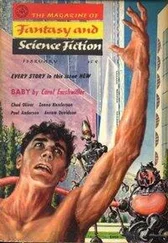Oliver Sacks - The man who mistook his wife for a hat
Здесь есть возможность читать онлайн «Oliver Sacks - The man who mistook his wife for a hat» весь текст электронной книги совершенно бесплатно (целиком полную версию без сокращений). В некоторых случаях можно слушать аудио, скачать через торрент в формате fb2 и присутствует краткое содержание. Жанр: Психология, на английском языке. Описание произведения, (предисловие) а так же отзывы посетителей доступны на портале библиотеки ЛибКат.
- Название:The man who mistook his wife for a hat
- Автор:
- Жанр:
- Год:неизвестен
- ISBN:нет данных
- Рейтинг книги:5 / 5. Голосов: 1
-
Избранное:Добавить в избранное
- Отзывы:
-
Ваша оценка:
- 100
- 1
- 2
- 3
- 4
- 5
The man who mistook his wife for a hat: краткое содержание, описание и аннотация
Предлагаем к чтению аннотацию, описание, краткое содержание или предисловие (зависит от того, что написал сам автор книги «The man who mistook his wife for a hat»). Если вы не нашли необходимую информацию о книге — напишите в комментариях, мы постараемся отыскать её.
The man who mistook his wife for a hat — читать онлайн бесплатно полную книгу (весь текст) целиком
Ниже представлен текст книги, разбитый по страницам. Система сохранения места последней прочитанной страницы, позволяет с удобством читать онлайн бесплатно книгу «The man who mistook his wife for a hat», без необходимости каждый раз заново искать на чём Вы остановились. Поставьте закладку, и сможете в любой момент перейти на страницу, на которой закончили чтение.
Интервал:
Закладка:
While we were talking my attention was caught by the pictures on the walls.
'Yes,' Mrs P. said, 'he was a gifted painter as well as a singer. The School exhibited his pictures every year.'
I strolled past them curiously-they were in chronological order. All his earlier work was naturalistic and realistic, with vivid mood and atmosphere, but finely detailed and concrete. Then, years later, they became less vivid, less concrete, less realistic and naturalistic, but far more abstract, even geometrical and cubist. Finally, in the last paintings, the canvasses became nonsense, or nonsense to me-mere chaotic lines and blotches of paint. I commented on this to Mrs P.
'Ach, you doctors, you're such Philistines!' she exclaimed. 'Can you not see artistic development -how he renounced the realism of his earlier years, and advanced into abstract, nonrepresenta-tional art?'
'No, that's not it,' I said to myself (but forbore to say it to poor Mrs P.). He had indeed moved from realism to nonrepresentation to the abstract, yet this was not the artist, but the pathology, advancing-advancing towards a profound visual agnosia, in which all powers of representation and imagery, all sense of the concrete, all sense of reality, were being destroyed. This wall of paintings was a tragic pathological exhibit, which belonged to neurology, not art.
And yet, I wondered, was she not partly right? For there is often a struggle, and sometimes, even more interestingly, a collusion between the powers of pathology and creation. Perhaps, in his cubist period, there might have been both artistic and pathological development, colluding to engender an original form; for as he lost the concrete, so he might have gained in the abstract, developing a greater sensitivity to all the structural elements of line, boundary, contour-an almost Picasso-like power to see, and equally depict, those abstract organisations embedded in, and normally lost in, the concrete. . . . Though in the final pictures, I feared, there was only chaos and agnosia.
We returned to the great music room, with the Bosendorfer in the centre, and Dr P. humming the last torte.
'Well, Dr Sacks,' he said to me. 'You find me an interesting case, I perceive. Can you tell me what you find wrong, make recommendations?'
'1 can't tell you what I find wrong,' I replied, 'but I'll say what I find right. You are a wonderful musician, and music is your life. What I would prescribe, in a case such as yours, is a life which consists entirely of music. Music has been the centre, now make it the whole, of your life.'
This was four years ago-I never saw him again, but I often wondered about how he apprehended the world, given his strange loss of image, visuality, and the perfect preservation of a great musicality. I think that music, for him, had taken the place of image. He had no body-image, he had body-music: this is why he could move and act as fluently as he did, but came to a total confused stop if the 'inner music' stopped. And equally with the outside, the world … *
In The World as Representation and Will, Schopenhauer speaks of music as 'pure will'. How fascinated he would have been by Dr P., a man who had wholly lost the world as representation, but wholly preserved it as music or will.
And this, mercifully, held to the end-for despite the gradual
*Thus, as I learned later from his wife, though he could not recognise his students if they sat still, if they were merely 'images', he might suddenly recognise them if they moved. 'That's Karl,' he would cry. '1 know his movements, his body-music'
advance of his disease (a massive tumour or degenerative process in the visual parts of his brain) Dr P. lived and taught music to the last days of his life.
Postscript
How should one interpret Dr P.'s peculiar inability to interpret, to judge, a glove as a glove? Manifestly, here, he could not make a cognitive judgment, though he was prolific in the production of cognitive hypotheses. A judgment is intuitive, personal, comprehensive, and concrete-we 'see' how things stand, in relation to one another and oneself. It was precisely this setting, this relating, that Dr P. lacked (though his judging, in all other spheres, was prompt and normal). Was this due to lack of visual information, or faulty processing of visual information? (This would be the explanation given by a classical, schematic neurology.) Or was there something amiss in Dr P.'s attitude, so that he could not relate what he saw to himself?
These explanations, or modes of explanation, are not mutually exclusive-being in different modes they could coexist and both be true. And this is acknowledged, implicitly or explicitly, in classical neurology: implicitly, by Macrae, when he finds the explanation of defective schemata, or defective visual processing and integration, inadequate; explicitly, by Goldstein, when he speaks of 'abstract attitude'. But abstract attitude, which allows 'categorisation', also misses the mark with Dr P.-and, perhaps, with the concept of'judgment' in general. For Dr P. had abstract attitude- indeed, nothing else. And it was precisely this, his absurd ab-stractness of attitude-absurd because unleavened with anything else-which rendered him incapable of perceiving identity, or particulars, rendered him incapable of judgment.
Neurology and psychology, curiously, though they talk of everything else, almost never talk of 'judgment'-and yet it is precisely the downfall of judgment (whether in specific realms, as with Dr P., or more generally, as in patients with Korsakov's or frontal-lobe syndromes-see below, Chapters Twelve and Thirteen) which constitutes the essence of so many neuropsychological disorders.
Judgment and identity may be casualties-but neuropsychology never speaks of them.
And yet, whether in a philosophic sense (Kant's sense), or an empirical and evolutionary sense, judgment is the most important faculty we have. An animal, or a man, may get on very well without 'abstract attitude' but will speedily perish if deprived of judgment. Judgment must be the first faculty of higher life or mind-yet it is ignored, or misinterpreted, by classical (computational) neurology. And if we wonder how such an absurdity can arise, we find it in the assumptions, or the evolution, of neurology itself. For classical neurology (like classical physics) has always been mechanical-from Hughlings Jackson's mechanical analogies to the computer analogies of today.
Of course, the brain is a machine and a computer-everything in classical neurology is correct. But our mental processes, which constitute our being and life, are not just abstract and mechanical, but personal, as well-and, as such, involve not just classifying and categorising, but continual judging and feeling also. If this is missing, we become computer-like, as Dr P. was. And, by the same token, if we delete feeling and judging, the personal, from the cognitive sciences, we reduce them to something as defective as Dr P.-and we reduce our apprehension of the concrete and real.
By a sort of comic and awful analogy, our current cognitive neurology and psychology resemble nothing so much as poor Dr P.! We need the concrete and real, as he did; and we fail to see this, as he failed to see it. Our cognitive sciences are themselves suffering from an agnosia essentially similar to Dr P.'s. Dr P. may therefore serve as a warning and parable-of what happens to a science which eschews the judgmental, the particular, the personal, and becomes entirely abstract and computational.
It was always a matter of great regret to me that, owing to circumstances beyond my control, I was not able to follow his case further, either in the sort of observations and investigations described, or in ascertaining the actual disease pathology.
Читать дальшеИнтервал:
Закладка:
Похожие книги на «The man who mistook his wife for a hat»
Представляем Вашему вниманию похожие книги на «The man who mistook his wife for a hat» списком для выбора. Мы отобрали схожую по названию и смыслу литературу в надежде предоставить читателям больше вариантов отыскать новые, интересные, ещё непрочитанные произведения.
Обсуждение, отзывы о книге «The man who mistook his wife for a hat» и просто собственные мнения читателей. Оставьте ваши комментарии, напишите, что Вы думаете о произведении, его смысле или главных героях. Укажите что конкретно понравилось, а что нет, и почему Вы так считаете.












